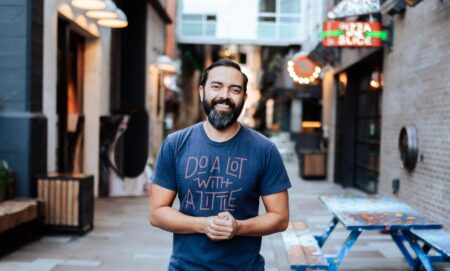Most entrepreneurs set arbitrary limits on their output before they know what’s actually possible. They decide to post twice a week, work eight hours a day, or launch one product per quarter without testing whether they could handle more. This cautious approach keeps them trapped in mediocrity.
Successful founders take a different path. Gary Vaynerchuk built Wine Library TV by posting daily videos for years before finding his sustainable rhythm. Sara Blakely worked nights and weekends on Spanx prototypes while maintaining her day job to test her capacity before going full-time. Reid Hoffman famously works in intense sprints followed by strategic recovery periods at LinkedIn and his venture capital firm.
They deliberately test their maximum capacity first, then intelligently dial back to find their optimal zone. This data-driven approach to performance beats guessing every time.
Test your limits to discover sustainable excellence
The magic happens when you dial back from extremes to find your optimal zone. After testing your edges, you can intelligently choose a sustainable rhythm based on experience rather than guesswork.
This approach creates sustainable excellence: performing at your best without burning out. Here’s how to do it with style.
Play business like a game
High standards become energizing when you frame them as a game rather than a burden. I hold myself to extremely demanding standards, but it never feels like work or grinding because I’m curious about what’s possible.
How far can someone push this? What happens at the edge? This playful curiosity transforms the experience of pushing boundaries.
Customize your constraints
After testing extremes, you can design personalized constraints that work for your specific situation. Maybe you discover three deeply focused content pieces monthly works better than rushing multiple each week. Or perhaps two intense training sessions weekly with perfect recovery outperforms five mediocre workouts.
Track relevant results over time. Then make optimizations based on real data about your performance.
Embrace the natural pendulum
Excellence requires cycles of intensity and recovery. By deliberately creating these cycles rather than avoiding them, you maximize their power. Plan periods of pushing boundaries followed by consolidation.
Intentional oscillation produces better long-term results than constant moderation. The rhythm becomes your secret weapon.
Create your personal edge-testing system
When you have your system set up, apply it to your projects. Here’s how to get started testing your edges to find your optimal performance zone.
Set a clear, time-bound challenge
Define a specific challenge with defined boundaries and a clear endpoint. Make it ambitious enough to stretch you significantly, but with a finish line in sight. I ran a 30-day YouTube challenge that fit this framework. It had both intensity and a clear end date.
Build in reflection points
Schedule regular moments to capture what you’re learning during the process. What’s easier than expected? Where are you struggling? Which systems are working? Don’t quit a sprint without trying a few tweaks to make it work. This ongoing data collection makes the experience infinitely more valuable.
Design your dial-back strategy
Before you begin, plan how you’ll transition from extreme testing to sustainable practice. What metrics will guide your decisions? How will you determine your optimal frequency? Having this strategy prevents the all-or-nothing trap that causes many people to abandon their progress entirely.
Monitor the right metrics
Track both performance and sustainability metrics. Performance tells you what’s possible, while sustainability indicates what’s repeatable. Together, they reveal your personal optimal zone. This is the sweet spot where you produce excellent work consistently without fatigue.
Get the strategic advantage of discovering your true limits
Testing your limits first gives you an unfair advantage over entrepreneurs who never discover their true capacity. You’ll know exactly how much you can handle during busy periods, what recovery you need, and where your breaking points lie.
Most founders operate on assumptions about their capabilities. You’re operating from real data. That’s the difference between playing to win and playing not to lose. Test your edges, find your zone, then dominate from there.
Read the full article here











